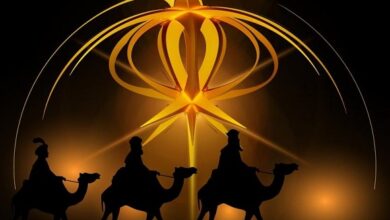The term pre-Columbian refers to civilizations prior to the discovery of America by Christopher Columbus in 1492. In fact, literally pre-Columbian means before Columbus.
America’s human origins
Scholars of human origins from the American continent consider that the first peoples arrived through the Bering Strait, although other theories claim that other inhabitants of the Pacific Islands were those who arrived in America approximately 40,000 years ago. From this, a series of civilizations gradually developed to form the pre-Columbian world.
Pre-Columbian Civilizations
The Mayans were the people whose culture began in 1000 BC. C and its civilization remained until the arrival of the first European settlers. The Mayans did not form a homogeneous civilization, as they spoke different languages and were geographically well dispersed (the territory of Mexico today and some territories in Central America). Culturally they developed a writing system and had extensive knowledge in Medicine and Astronomy. The Mayans were polytheists and worshiped the bacab gods. They were dedicated to agriculture, especially the cultivation of corn and cocoa. Pre Columbian
Socially they had a hierarchical structure . Thus, the nobles and priests were at the top of the social pyramid , and each city– state was ruled by a Mayan chief , known by the name of Halach Uinic. Below the ruling class were civil servants and at a lower level were warriors, artisans and peasants. The base of the social pyramid was formed by slaves who were normally imprisoned in military conquests.
The Aztecs also believed in the plurality of gods, to whom they offered human sacrifices.
Most of them spoke the Nahuatl language and their writing was based on a system of pictograms. From a cultural point of view, they exercised painting, music and goldsmithing, in addition to their architectural constructions, which expressed great technical knowledge. Social power was exercised by an absolute emperor and below him were priests and warriors. The Aztec people were dedicated to agriculture, trade and crafts.
The territory of the Incas extended to the north of Chile, a part of Bolivia and territories of Argentina, Colombia and Ecuador. Pre Columbian
This civilization did not have a conventional writing system, but manipulated a system of knots (the quipus) to maintain accounting control of its business affairs.
The archaeological remains of the Incas are scarce, as the conquerors razed their legacy. However, the few preserved remains allow us to draw several conclusions: Sun worship was practiced; the lowly classes wore amulets; they spoke Quechua and created a sophisticated network of roads to get around. The civilization of the Incas was also known by some testimonies of the first Spanish chroniclers, especially by the chronicles of Juan Diaz de Betanzos. Pre Columbian
